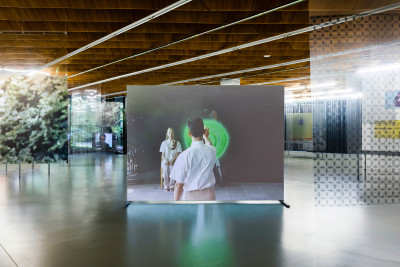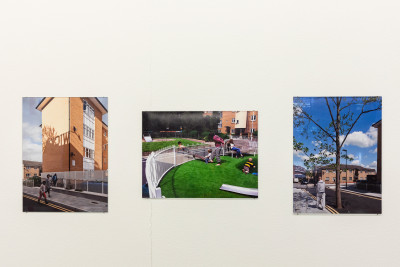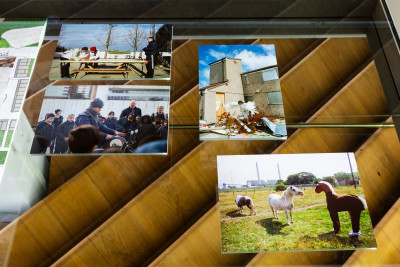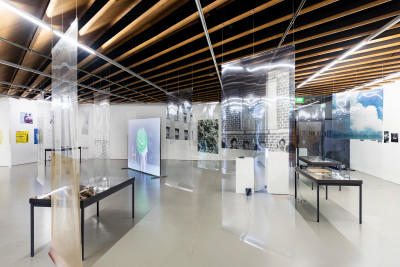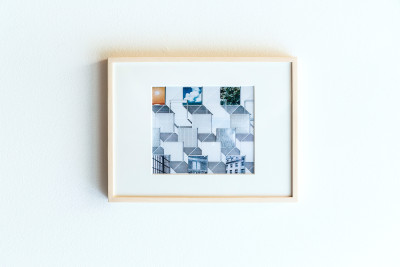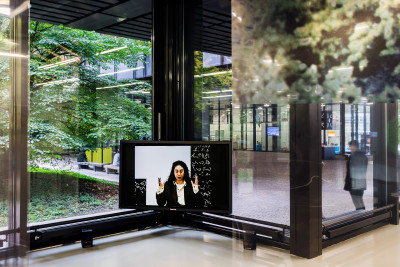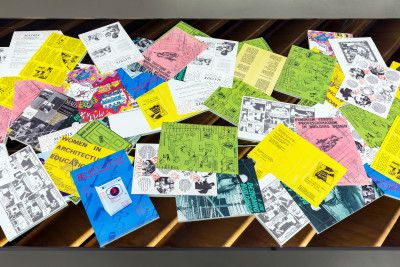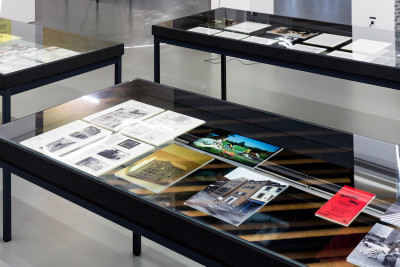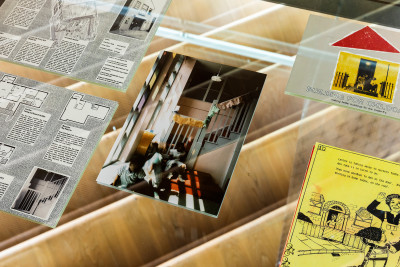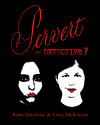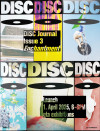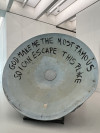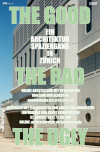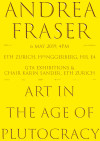
SPACE AS MATRIX
Matrix Feminist Design Co-operative, Ursula Mayer, muf, Morgan Quaintance, Susana Torre
28 September–9 December 2022
Opening: Tuesday, 27 September 2022, 6 pm
gta exhibitions, ETH Zurich, Hönggerberg
Understanding space as matrix is to underline space as a complex layering of ever-changing social relations. It is to disrupt the normalcy of some, whilst not necessarily stressing other or new conditions under which these social relations arise – rather altering the terms on which they are founded.
The exhibition Space as Matrix brings together artists and architects who stand against a hierarchization of space and the relations within it. On several levels, they contest how space is normally shaped, who it is shaped by, and who it is shaped for. Their fields of action range from acting outside required building specifications to working together with users on design processes to – more fundamentally – breaking with generic representations of space and the collapsing divisions between architect and user, artist and viewer, academia and lived experience.
The title of the exhibition is derived from a text by Argentinian-American architect, critic, and educator Susana Torre, who wrote “Space as Matrix” in 1981. In the text, Torre takes building to task that blindly reproduces a fixed set of functions for each room, therefore assuming the relations that are enacted within them. Her critique derives from questioning the typology of the nuclear family home that had often brought with it a gendered division of labor. This example is paradigmatic for a more general critique in her text that scrutinizes normative spatial distribution as defining social hierarchies and the associated systems of belief. As an alternative to an architecture freighted with a fixed ideology, Torre proposed a modular design she named The House of Meanings – neither open plan nor defined plan, but an elementary structure that can respond to change. The House of Meanings is designed together with and partly by the end-user and can adjust to a specific time, place and person. It goes against normative spatial theory, that as per Torre is based on binaries such as interior/exterior, building/nature, private/public. Here, not one but many meanings can take shape, remain elusive, or become layered one over the next to become components of a continuous spatial matrix. These ideas are manifest in Torre’s diagram of The House of Meanings, which is plan, metaphor, and manifesto all in one, and in this exhibition becomes a formal medium – as transparent screens – that represents the actual and metaphoric ties between the works of Matrix Feminist Design Co-operative, Ursula Mayer, muf, Morgan Quaintance, and Susana Torre herself.
The architects and artists in the exhibition are linked by their pursuit of similar methods. Their practices are founded in feminist, queer and/or intersectional approaches: First and foremost, all make space for and with people absent from certain realms – for women in patriarchal spaces, for migrant groups in cities, for children in public environments, amongst others. Some define their practice beyond their profession’s standard services, including publishing theoretical writing, teaching building law, and offering technical support in workshops. They focus not on “prestigious” builds but in the “small” realm of the everyday – on playgrounds, high streets, parks. Others approach the idea of space as continuum more poetically, complicating representations of gender or confronting lived reality with theory. In this, all of them face their own fraught histories, seeking new models of identity and practice – acknowledging collaboration, reflecting upon how architecture can respond to social relations, and seeking alternative historiographies from which to draw from. As Torre and her students posed during the years that make up the beginning of this exhibition’s small historical excerpt, the question being asked, again, is not so much what does it mean, but what purpose does it serve. With this question are mapped changing concerns around the gendering of space that chronicle not only the potential but also the potential pitfalls of feminist, queer and/or intersectional approaches to architecture, and, more generally, space as a whole.
Space as Matrix will be accompanied by a series of events that will expand upon the exhibition’s initial presentation of practices and explore the affective requirements and consequences of such practices: The possible collateral damage that practices determined to “go against the system” expose themselves to, the sense of attachment to certain places and their associated social relations, and what demands seem to be the same now as half a century ago.
Accompanying the exhibition is a book selection presented at our bookstore Madame ETH.
Curated by Geraldine Tedder with gta exhibitions, ETH Zurich
Photos: Nelly Rodriguez
